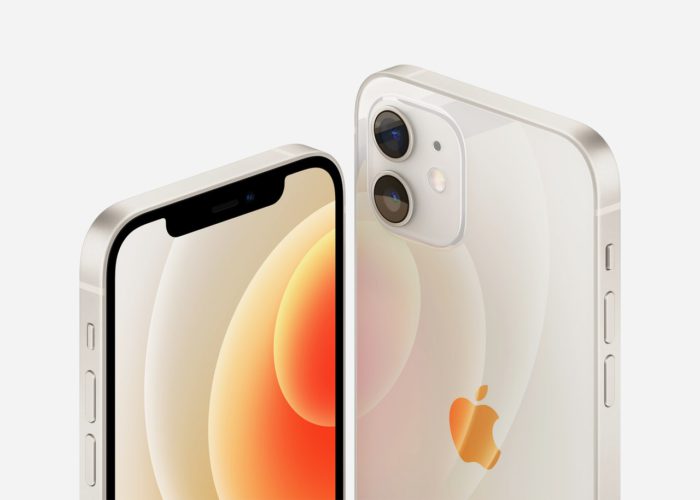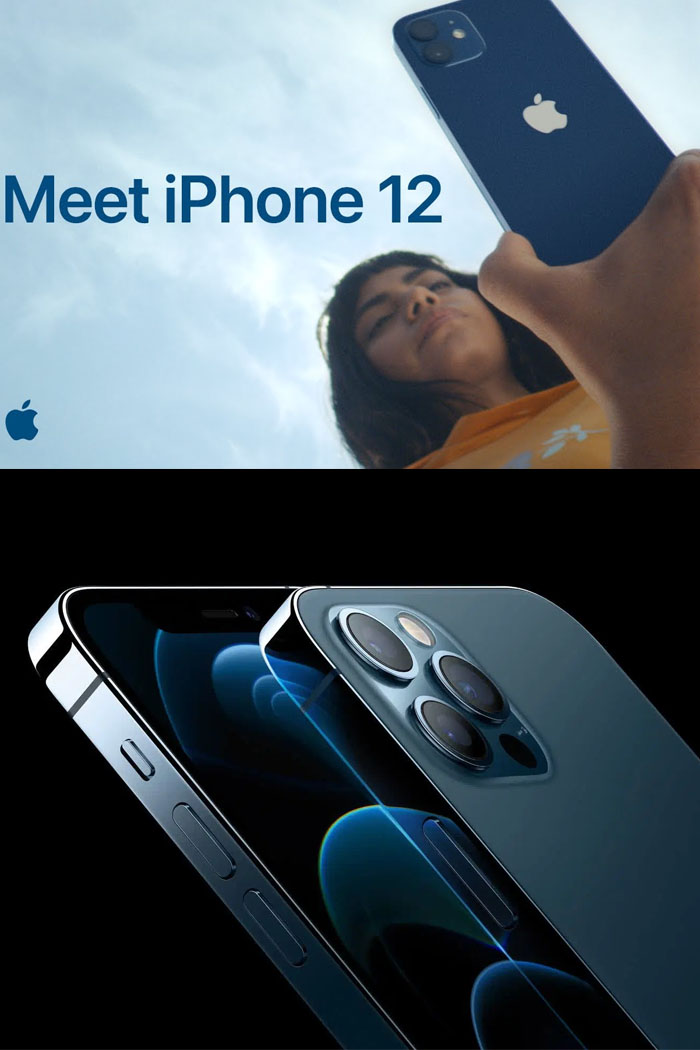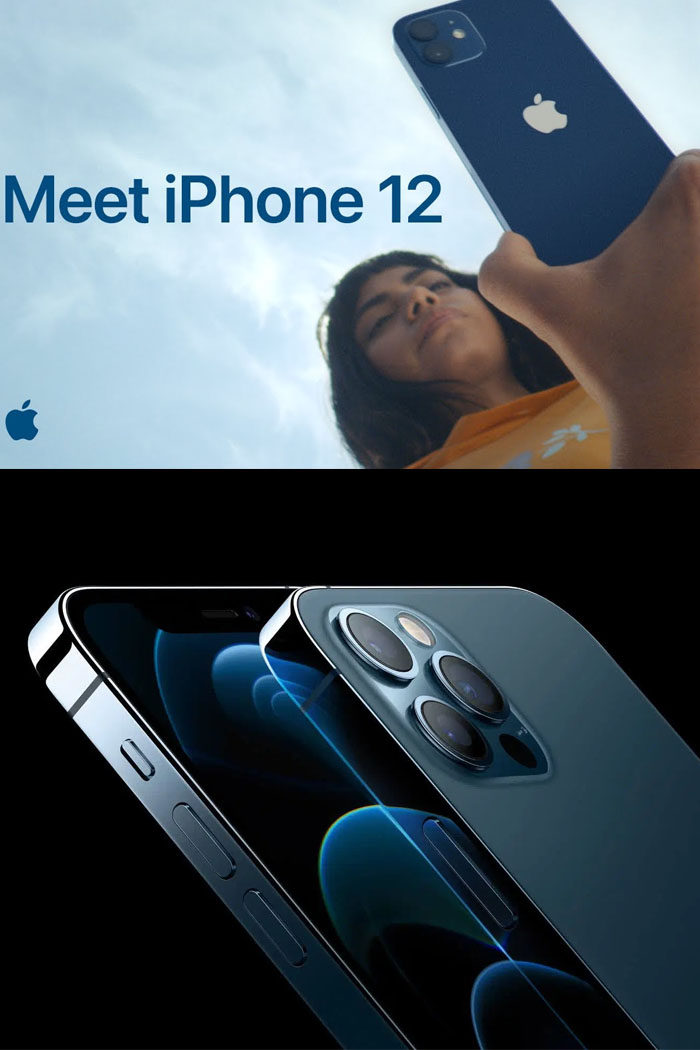The new iPhone 12, iPhone 12 Mini, iPhone 12 Pro, and iPhone Pro 12 Max were all revealed today in a pre-taped, virtual event from Apple’s campus in Cupertino, California.
All four phone models support 5G, and Verizon CEO Hans Vestberg made a brief appearance on stage alongside Apple CEO Tim Cook (the two stood far apart, presumably because of coronavirus concerns). Vestberg said that “5G just got real,” and touted the network’s service in the US.
However, ultrawide band 5G is still not widely available across the US, and works best in places like crowded stadiums—which most of us won’t be visiting anytime soon. Mid-band 5G networks are also still being rolled out here.
So after announcing its support of 5G, Apple turned to the other features of the newest iPhones, including an upgraded chipset, better cameras, improved support for wireless charging, and even lidar scanners. The new phones range in starting price from $699 to $1,099, and go upwards from there.

Apple’s new iPhones arrive at a particularly precarious time. The US is still in the thick of the coronavirus pandemic, unemployment has surged over the past several months, and consumers have had to change the way they spend. Recent data has shown that the fastest-growing areas of the smartphone market are low- to mid-range phones, not high-end flagship devices.
But Apple continues to put out high-priced phones it believes will cement its position as the leader in smartphone innovation, while offering reduced prices on older models and building out its subscription services.
The new iPhone 12 is the most basic new iPhone. It still has some notable improvements over last year’s iPhone 11. It swaps in a brighter OLED display for last year’s liquid crystal display. Its 6.1-inch display is the same size as last year’s iPhone 11, but the new phone’s body is smaller (15 percent smaller in volume). Apple is also promising that this phone’s screen is less breakable, thanks to a new ceramic-infused glass it worked with Corning to develop.
It runs on Apple’s custom-made A14 Bionic processor—which the company announced last month with the new iPads—which is the first smartphone chip build on the latest 5-nanometer technology. It crams billions of transistors into a tiny chip, and Apple claims this is the fastest CPU in any smartphone. It also has 16 cores dedicated to machine learning processes.
Some consumers won’t care as much about the chip advancements, except as it pertains to the camera improvements. The iPhone 12 has a 12-megapixel ultrawide rear camera, with a wider aperture that’s supposed to offer much better low-light performance.
The camera supports an updated version of the high dynamic range (HDR) imaging standard. There are also Night Mode enhancements, and Night Mode works on both the rear ultrawide and the front-facing selfie camera now.
Interestingly, the new iPhone 12 also has something called MagSafe—Apple borrowing the terminology from the now-extinct magnetized MacBook laptop charging ports and applying it to phones.
It looks like this is less of a feature built directly into the phones, or the phone’s ports, and more of a standard for accessories; you can, for example, buy a magnetized MagSafe wallet for your phone, and it will improve the phone’s wireless charging capabilities with Apple-made and third-party wireless charging stations. The iPhone 12 won’t ship with a five-watt charging puck—though it will ship with a USB-C to Lightning cable.
Apple also announced something called the iPhone 12 Mini, essentially a smaller version of the aforementioned iPhone 12, with a 5.4-inch OLED display and the same chipset. The iPhone 12 starts at $799, while the iPhone Mini starts at $699.
Photo Finish
And then there are the new iPhone 12 Pro and Pro Max, the top-of-the-line devices. They have fancier builds (and a couple new colors, including “stunning gold” and “Pacific blue”); bigger screens (the iPhone 12 Pro jumps up from a 5.8-inch display to a 6.1-inch display, while the iPhone 12 Pro max is the largest iPhone display ever, at 6.7 inches); and seriously souped up cameras.

The form factors, though, are nearly identical to last year’s iPhone 11 Pro and Pro Max; Apple has simply extended the edges of the displays. Like the iPhone 12, these run on the A14 Bionic chip. The cameras are the big sellers with these phones. The rear camera modules have three cameras: ultrawide, wide, and telephoto. Apple uses something called “Deep Fusion” to blend all of this captured data in a way that supposedly produces pro-grade photos.
Night Mode on these phones is improved by the new lidar scanner, part of Apple’s push into more immersive AR (and, we think, an eventual push into AR glasses). Portrait mode has improved “bokeh” effects and Depth Control, and optical image stabilization is done at the sensor level.
Apple is also introducing something called Apple ProRAW, better processing and editing for photos directly in the Photos app. And on the video side, the cameras support 4K HDR video recording, although that’s industry standard now for flagship phones.
These two phones start at $999 for the iPhone 12 Pro, and $1,099 for the iPhone 12 Pro Max. Trick your Pro Max phone out with the most storage offered—and you’re looking at a $1,400 phone. And of course: They both support 5G.
While wireless carriers have rolled out 5G networks in dozens of cities, the earliest versions haven’t been that fast—it all depends on which flavor of 5G is available—and the US has lagged behind other nations, particularly China, in the deployment of these super speedy networks.
On the handset side, other manufacturers put out 5G devices long before Apple did. Samsung has, over the past year and a half, released at least 17 smartphones that support 5G. Even Google, which has a relatively tiny hardware business, beat Apple to 5G phones.
But symbolically, a 5G iPhone is a big deal, particularly in the US. It’s one of the most significant updates we’ve seen to the iPhone in years, which has nudged innovation forward with its sophisticated phone cameras and custom silicon but hasn’t had a must-have feature in awhile.
This could move the needle in the rollout of 5G across the US, says Patrick Moorhead, founder at Moor Insights & Strategy. “With Apple coming out and supporting it, I wouldn’t call it the last chance for US carriers to make a statement around 5G, but at this point they have to make some kind of statement,” Moorhead says.
Still, it remains to be seen whether 5G—or lidar, or slightly improved cameras—will drive consumers to upgrade, particularly in these uncertain (crazy insane) times. Last year’s iPhone 11 just got a significant price reduction, to $599, and the iPhone SE, announced this spring, costs just $399.
Apple has proven that it can produce new iPhones (albeit on a slightly delayed schedule) during the coronavirus pandemic. The question is whether people will need, want, or be able to upgrade their phones as frequently as they did before.







